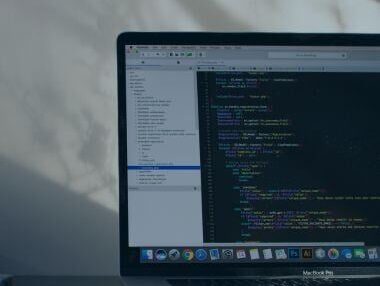Business Strategies for the New Normal (Life After the Pandemic)
Business solutions must adapt to the changing times and seasons, and the one we are in now is far from normal. The pandemic upended the way we live, work, and do business.
The world is abuzz about the “new normal,” our life after the pandemic. Eager to get back into some kind of normalcy, businesses too are gearing up for the new normal economy.
But this “new normal” demands new mindsets, new strategies, and a new resilience among businesses. There are opportunities for growth despite the health and financial crisis the world is going through. If business models are adjusted to adapt to new challenges and demands, businesses can grow and thrive.
Here are three examples of business solutions effective for life after the pandemic:

3 examples of business strategies for the new normal
-
Co-business solutions for micro and small businesses
Individual freelancers or small freelancing groups avail of coworking spaces that reduce CAPEX and OPEX costs. We can carry this concept over to micro-businesses (MBs), small businesses (SBs), and even small-to-medium-sized enterprises (SMEs).
Micro businesses are companies with annual sales and assets valued at less than $250,000 per year and fewer than five people in its workforce, including the owner. Micro enterprises are part of this category.
No matter what market or industry a micro-business belongs to, it would need similar skills and types of operations as their larger business counterparts. The world’s economy is going more and more digital. It gives micro-businesses and small businesses a chance to compete with more prominent brands on fair competition.
But one thing that MBs, SBs, and SMEs often lack is capital and facilities for design, simulation, and manufacturing. If you are a business with the capacity for all that, you can offer your business’ capabilities to extend others.
For instance, a company called TECHNIA is helping MBs and SBs leverage its preexisting business-engineering systems. The company launched its “Business Must Go On” offering, empowering business, digital, and operational continuity for micro to small enterprises with legacy 3DEXPERIENCE installations.
The are three features to this co-business solution includes:
-
Co-Design: providing SaaS allows MBs and SBs to bring their teams together with their customers into one virtual environment that empowers collaboration, fosters innovation, and boosts productivity to stay globally competitive.
-
Co-Simulation: They are using AI (artificial intelligence) and cloud computing technologies to sustain businesses during times of disruption. Simulation technology helps businesses to validate designs before actual implementation.
-
Co-Manufacture: Although the recent business disruption because of the pandemic affects all sectors, it does so differently. One thing is constant, however, and that is for businesses to continue planning, preparing, and scheduling resources to keep businesses going.
If you can provide this service to MBs/SBs, this is the perfect time to offer such services.
You will not only be helping businesses to keep operating and growing, but you will also open a new channel of income for your company.

-
Distributed teams: going remote
In the last decade, remote working increased to 115% of the workforce. This growth is unprecedented and ten times faster than any kind of workforce increase on record.
So even before the pandemic, remote working is already on the rise. More and more companies were adopting the work-from-home set-up to save costs and capitalize on finding the best talents they could get if the location is no longer an issue.
The pandemic hastened the speed of adoption of remote workers into the mainstream workforce. It is no longer for niche careers, but for every type of work that does not require manual operations, like construction work, manufacturing factory operators.
All the world issues between now and in the years to come will cause a shift in businesses, who will most likely operate with distributed teams being the norm.
Resilient businesses discern opportunities amid times of crisis. The pandemic left businesses with no choice but to rethink their business models and adapt to challenging times. Through digital technologies, businesses can keep meeting market demands and stay in touch with their consumers.
One way businesses adapts is by distributing their teams. Some businesses reassigned most workers to work remotely or from home, while a skeletal workforce continued to manage business facilities.
Smaller businesses let go of their physical locations and went 100% remote, operating the business through Digitech innovations for business.

-
Globalization pushes businesses forward
Globalization has a huge effect on leading international companies. Life after the pandemic drives globalization in companies affecting management decisions and liberating local companies into the global market.
The increase in globalized production helps companies cope amid pandemic woes and still attain record-high ROI for their businesses and companies. Countries that once supplied laborers and talents to the global stage are now emerging as untapped pools of global consumers by the millions.
It also breeds new competitors, since businesses are competing on a global platform. Those companies that have invested in building an international presence before the pandemic can adapt quickly to business after the pandemic.
Globalization changes the way businesses and industries operate from research and development and product design to manufacturing, sales, marketing, and even government relations.
Whatever the size of the business, a flexible and quickly adapting attitude is needed from owners and strategists. Businesses need to strengthen their capabilities of responding to the challenges of today’s rapidly transforming global markets.
Conclusion: The new normal demands new business solutions
Jack Ma says that the internet will be the “lifeblood of enterprises after COVID-19 pandemic.” Those who have their business online will experience the fastest growth amid the pandemic. He adds that Internet technology and eCommerce are the new business infrastructure.
Every business must take this direction to stay competitive in the global economy.
The real economy and internet economy will run alongside each other synergistically and be the primary developing trend and business solution in the new normal.
Author: Mayleen Mênez
Mayleen Meñez used to work in media before finding her true passion in NGO work, travelling the Philippines and Asia doing so. She homeschools 3 kids and loves reinventing Filipino dishes. She is a resident SEO writer for Softvire.






